Stan Garfield's Blog
November 6, 2025
T.J. Elliott: Profiles in Knowledge

This is the 121st article in the Profiles in Knowledge series featuring thought leaders in knowledge management. T.J. Elliott, former Chief Learning Officer of ETS, is now a playwright and author. I met him when we were both instructors in the Columbia University Information and Knowledge Strategy (IKNS) Program. He has contributed to many online discussions in the SIKM Leaders Community.
As ETS’s Vice President and Chief Learning Officer, T.J. Elliott had overall responsibility for those processes that share knowledge, develop people and organizations, assure appropriate collaborative workspaces, and enable growth and innovation across the enterprise. He was charged with identifying and helping ETS implement new and better ways to work in an increasingly competitive marketplace, as well as for ensuring that the organization capitalized on the skills and talents of its employees to achieve its mission.
Background EducationNova Southeastern University — Master of Science — MS Education, Computing Technology in Education, 1994Manhattan University — Bachelor of Arts — BA, English Language and Literature/Letters, 1969–1973ExperienceKnowledge Workings — Co-Founder, 2019 — PresentETSKnowledge Broker, 2017–2020Vice President & Chief Learning Officer, 2002–2017Cavanaugh Leahy — Director of Consulting Design, 1996–2001Longview Associates — Vice President, 1989–1994American Airlines — Employee Assistance Representative, 1985–1988Writer, 1980–1983ProfilesLinkedInColumbia University Information and Knowledge Strategy (IKNS) Program: Profiles in KnowledgeTwitterFacebookSarder TVKnowledge Workings Theater CompanyContentMediumTesting: A Personal History (Substack)LinkedIn PostsArticlesResearchGateWhen It Comes to Workforce Management Systems, We Need Anthropology Before TechnologyRecognizing Performance — Testing: A Personal HistoryIslands and Labyrinths: Overcoming Barriers to Effective Knowledge Transfer
EducationNova Southeastern University — Master of Science — MS Education, Computing Technology in Education, 1994Manhattan University — Bachelor of Arts — BA, English Language and Literature/Letters, 1969–1973ExperienceKnowledge Workings — Co-Founder, 2019 — PresentETSKnowledge Broker, 2017–2020Vice President & Chief Learning Officer, 2002–2017Cavanaugh Leahy — Director of Consulting Design, 1996–2001Longview Associates — Vice President, 1989–1994American Airlines — Employee Assistance Representative, 1985–1988Writer, 1980–1983ProfilesLinkedInColumbia University Information and Knowledge Strategy (IKNS) Program: Profiles in KnowledgeTwitterFacebookSarder TVKnowledge Workings Theater CompanyContentMediumTesting: A Personal History (Substack)LinkedIn PostsArticlesResearchGateWhen It Comes to Workforce Management Systems, We Need Anthropology Before TechnologyRecognizing Performance — Testing: A Personal HistoryIslands and Labyrinths: Overcoming Barriers to Effective Knowledge TransferHere are two approaches that have shown promise at ETS.
Blogs, Contests, and Weak Ties
One of the realities of employees being spread like islands within an organization is that their connections are usually weak with all but their specific group. But so-called weak (rather than non-existent) connections are a good source of new ideas. Sociologist Ron Burt makes the case succinctly: “The weak-tie argument is elegantly simple people live in a cluster of others with whom they have strong relations. Information circulates at a high velocity within these clusters. Each person tends to know what the others know. The spread of information on new ideas and opportunities, therefore, must come through the weak ties that connect people in separate clusters.” Having an area where employees can exercise these weak ties to encounter new expertise or ideas holds promise, but hosting a blog, wiki, or other social-media space without a specific purpose and facilitation will fail. Running contests in order to elicit knowledge that is held throughout the organization can motivate the sharing.
ETS ran “Margin for Mission,” inviting staff to submit ideas for generating revenue or saving money. Each participant received a certificate for a free cup of coffee or tea, with larger prizes awarded at the end of each month for the best idea. The message was that as a not-for-profit we must increase our revenue and control our expenses to be able to fulfill our mission. The contest ran for ten weeks and had submissions from almost one quarter of ETSers that were read in turn by an equal number of “lurkers.” The prizes were modest — a $250 gift certificate to Amazon — but the rewards were significant: employees were introduced to other individuals and their ideas.
Connect and Then Connect Some More
We established our “Knowledge Workings” blog to create different combinations of people by arranging forums where they are more likely to meet and converse with coworkers outside their disciplines. We started virtually and then built upon those connections for face-to-face events. For example, there were 1,259 online entries in 2009; fewer than 400 netted a reply. So we threw the “Blog Oscars” and had those who contributed the most stroll down a red carpet while all “lurkers” could watch and enjoy refreshments, bringing together colleagues who rarely interact. Such combinations help all to understand the tectonics of knowledge in the organization better. Then it becomes possible to create an “earthquake” by forming cross-divisional, cross-functional teams that have dual goals of solving wicked problems and learning about how they defeated the drooping entropy of human communication to do so. Invariably — when adeptly facilitated — they learn a great deal from each other.
In developing such connections, try to get the leaders out of the way. Bob Sutton has noted how some leaders brilliantly dilute their influence but stir their people by taking a backseat in some discussions. A senior leader in our San Antonio headquarters has held mixed lunches with every one of the four hundred people there. He speaks sparsely and almost always to prompt others to take the lead in discussing what they know that they think others should know.
Avoid the Folly of “Build It and They Will Come”
Building new systems designed to capture and transfer knowledge does little to overcome individual and organizational barriers to knowledge sharing and use. Experience discredits such systems. At ETS we now require leadership to build bridges among existing systems. Can the Quality Management System talk to the SharePoint platform and vice versa? Is there a map of all governance groups so that they know where they might find additional information? Do new hires receive an orientation that offers the obvious but often overlooked opportunity to meet other people? Are there interview series at which those with important information from the front lines of your business are questioned carefully and inventively in front of an audience of coworkers who don’t know them? We undertook experiments based on each of the above questions to expose knowledge to a greater audience that either could not find it or didn’t even know to look.
If the connecting happens and the weak ties deliver, then more people will know not only what others do, but also new things as knowledge combines, generates, and recreates. In such a circumstance, the islands are bridged and the labyrinth comes with a GPS.
Academia.eduPiloting Knowledge Management: Lessons Learned from the Small-Scale Approach to Design and Implementation at ETS with Felicia DeVincenziLessons Learned
In retrospect, especially in the case where most knowledge and expertise are tacit, the focus should have been on the people in the community and on the people being considered owners of their knowledge. During one of the SME meetings, as SMEs were trying to identify where important knowledge files were located, the common responses were “It isn’t anywhere. So-and-so has it in her head.” and “Nobody can write that down, you have to have the experience to know what to do.” Gorelick, working as facilitator, in an aside to DeVincenzi, observed, “Your work can no longer be focused on collecting and codifying content in files and on shared drives. You have to collect the stories of the people.”
Seekers and Sharers
As a result of the lessons we learned from the pilot on best practices in responding to RFPs, the learning and development group under Elliott has changed its definition of KM. First, we had narrowed it to be “connecting knowledge seekers with knowledge sources to make better decisions that produce effective action.” We had intended the context to be an actionable one that would procure short-term wins for ETS. The light bulb went off one day that many of the people we had to reach were not knowledge seekers. The community believed that they already had all the knowledge they needed. They were not necessarily “seeking” knowledge. For the purposes of a working definition of KM at ETS, we had to alter our description of our colleagues from “knowledge seekers” to “knowledge users”. We needed to find out who the people were who could use the knowledge, and convince them that it was worth their while to examine the ways they go about deciding and acting and that this “other knowledge” might actually bring value to their enterprise.
The authors would like to note that this condition of believing one’s current stock and variety of knowledge is sufficient is not peculiar to ETS. The work of Argyris and Schon has demonstrated that the default mode of people in organizations is to protect against any information that might disconfirm their existing hypotheses. It might be said that the other side of Seely Brown’s and Duguid’s work is that there is also an antisocial life of information and, consequently, knowledge: people are not necessarily interested in finding out a new way to do things or learning a novel fact, especially if it contradicts their existing view of the world. They may even actively seek to block the exchange of such information.
Leaders may also actively or subconsciously support the hoarding of knowledge. Leading a group of many work experts (relative to groups with nonexperts) may lead to the achievement of higher productivity or gains (as compared to the achievement of those of groups with fewer experts), which leads to greater recognition and, subsequently, a wider and wider span of executive control. From a systems thinking perspective, a “Success to the Successful”[1] dynamic can be in play. Sharing one’s knowledge (or the knowledge of one’s expert group) can be seen as a way to diminish one’s individual expert status, turning the exceptional into the commonplace. If rewards focus on individual or small group gains, and there are no rewards for sharing knowledge with others and contributing to organization-wide gains, this sort of system can perpetuate. At ETS, where expertise, seniority, and accomplishment are often equated, there needed to be intervening variables to reinforce the importance of knowledge sharing. This year, in fact, leaders have collaborated with Elliott to institute a high-profile performance award, equal to the traditional awards given to individually based accomplishments, which will acknowledge the introduction and perpetuation of a best practice across the company.
And because communities of practice often cross divisional and organizational boundaries, this pilot experience reminded us of the extent that politics can impact the knowledge-management practitioner’s efforts to influence a community’s work habits and support their work.
There are no politically neutral contexts. Knowledge-management practitioners not only need to be adept at demonstrating the business benefits that sharing knowledge brings to individuals and groups, but they must also be savvy of the political risks involved for members of the community who take steps to change the way they work. One of the SMEs who worked with DeVincenzi to review content of the multidimensional map was concerned that she was spending too much time on the project, would receive no recognition for the effort being expended, and should probably be working instead on her “own” projects, as were the other SMEs.
To support knowledge communities well, KM specialists need to understand the risk from the members’ perspectives, considering political and social issues such as who is making which contributions, how a member’s status within traditional hierarchies comes into play, and what messages members are receiving (directly and indirectly) from their supervisors and stakeholders. The knowledge practitioner should seek to identify risks for community members ahead of time and consider steps to ameliorate them where possible. If multiple stakeholders appear to have conflicting goals, next steps need to be carefully analyzed.
LinkedIn ArticlesLeaving the Field: An Idiosyncratic Guide to Reinvention — Part 1: Two Years a Knowledge BrokerNeed to Lead Innovation? You’ll Want The Three Box SolutionReading the Crowd 2: Only Humans Need Apply Winners and Losers in the Age of Smart Machines by Tom Davenport and Julia KirbyReading the Crowd 4: Cognitive Gadgets: The Cultural Evolution of Thinking by Cecilia HeyesA Sharp and Smart Book: The Stupidity ParadoxEveryone at Work Should Read an Everyone Culture — A Book Review15 Thanks Yous#1: Marshall Goldsmith#2: Tom Davenport#3: Larry Prusak#6: Marilyn Darling and Nancy Dixon#14: Dorothy Leonard#15: Rob CrossArticles by OthersA Blueprint for Building Innovation Capacity by Ilana Raia“Failure is the foundation of learning and a far better teacher than success,” added former ETS Chief Learning Officer T.J. Elliott, paraphrasing Bill Gates.
“Don’t lose the tacit knowledge and experience that made you successful in the first place,” admonished T.J. Elliott. He pointed out that balancing innovation with the necessary “operating and maintaining” of a company is a subtle distinction for new innovation leaders.
The Importance of Learning Organizations from an interview with Jennifer CrumptonWhen asked what about the greatest challenge he has ever faced, Elliott talks about how he views himself as a work in progress and that he continuously works to improve his knowledge and skills. This dedication to continuous learning and humble attitude has served Elliott well as a Chief Learning Officer. It keeps him focused on being forward thinking and in creating an environment where innovation and creativity can flourish. The Sarder TV interview provides an insider view of what life is like as a Chief Learning Officer of a growing and dynamic organization.
Community and PresentationsSIKM Leaders CommunityPostsAugust 2018 Presentation: What Does Done Look Like? The ETS Knowledge Story 2002–2017What does-done-look-like-08212018
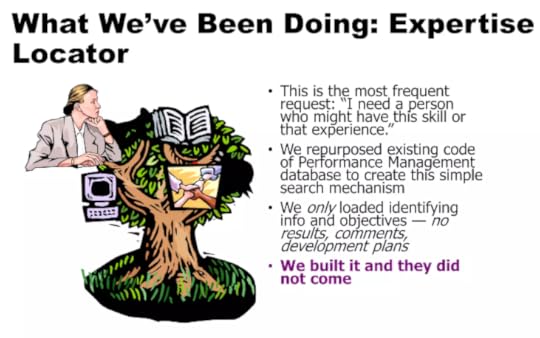 SlideShare — Ten Tools: A collection of organizational and individual methods to aid effectiveness
SlideShare — Ten Tools: A collection of organizational and individual methods to aid effectiveness1. Atom of Work
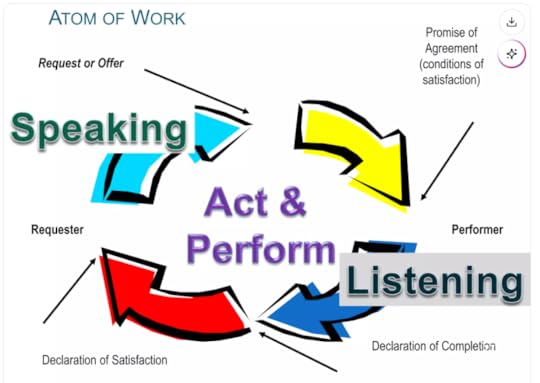
2. Gap Analysis

3. Difficult Conversations
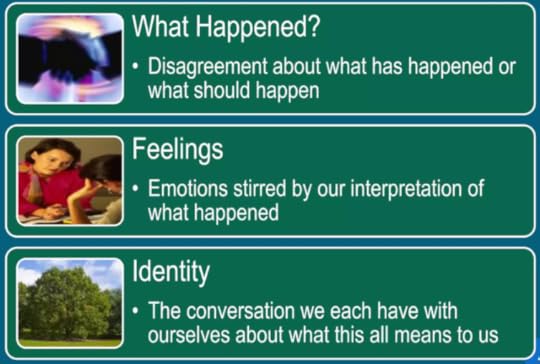
4. Advocacy vs. Inquiry
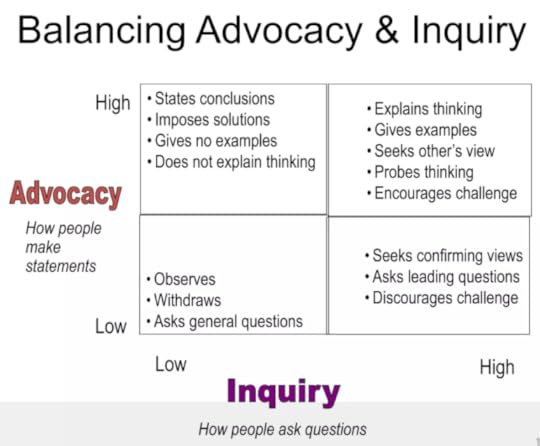
5. Feed Forward & Johari Window

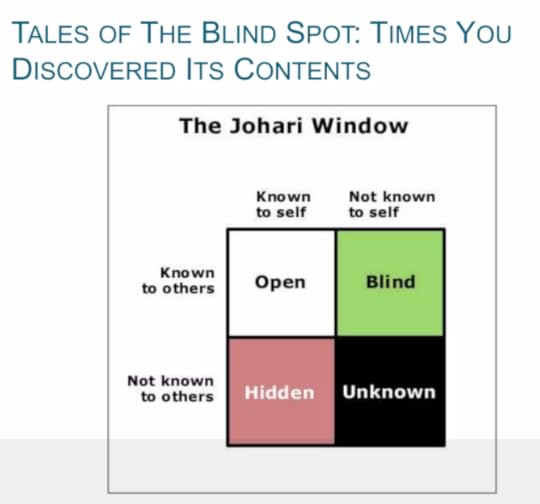
6. Team Effectiveness: Ground Rules for Teams & Facilitation
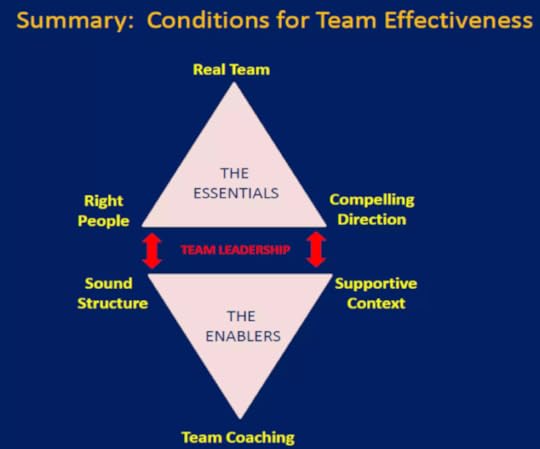
7. Problem-Solving Techniques

8. Mental Maps

9. Seven Influence Strategies
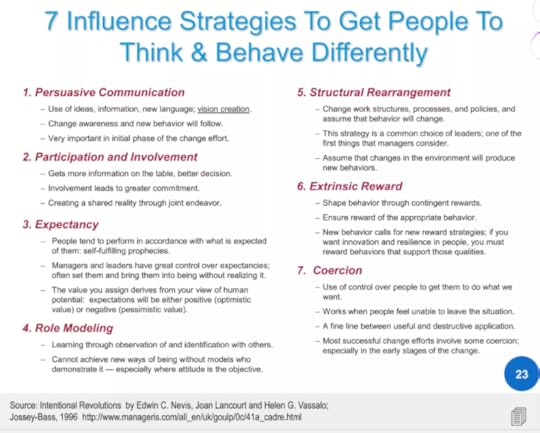
10. Events of Instruction

Bonus: Snyder’s Six Steps
 PodcastsWhisper in the WingsMoving Boulders with StoryKeys to Unlock Workplace ChallengesReinventing ReinventionVideosYouTubeThe Importance of Communicationhttps://medium.com/media/68b8fe4fdf05f363419ce9c524ee8e67/hrefLearning from CLOshttps://medium.com/media/ed0d88de7d66677418c3ae17c90b5271/hrefUnlocked with Madelyn BlairReinventing Reinventionhttps://medium.com/media/224d7f7fed09fe938e939ad7b94803d1/hrefHow I Bring Happiness to the New Yearhttps://medium.com/media/1003fee2780e5d6e3721f6bf8a830cda/hrefKey to Unlock Workplace Challengeshttps://medium.com/media/ddd901606bd8b28ee406cf46a13fbc45/hrefMoving Boulders with Storyhttps://medium.com/media/191e480d24448175a8ecf0ecc1ab893c/hrefTJ & Loren Teaserhttps://medium.com/media/c8c46452062e3b029ac242d84fd242ca/hrefBooksDecision DNA: Discovering Reality Based Decision Making with John C. ElliottExcerpt
PodcastsWhisper in the WingsMoving Boulders with StoryKeys to Unlock Workplace ChallengesReinventing ReinventionVideosYouTubeThe Importance of Communicationhttps://medium.com/media/68b8fe4fdf05f363419ce9c524ee8e67/hrefLearning from CLOshttps://medium.com/media/ed0d88de7d66677418c3ae17c90b5271/hrefUnlocked with Madelyn BlairReinventing Reinventionhttps://medium.com/media/224d7f7fed09fe938e939ad7b94803d1/hrefHow I Bring Happiness to the New Yearhttps://medium.com/media/1003fee2780e5d6e3721f6bf8a830cda/hrefKey to Unlock Workplace Challengeshttps://medium.com/media/ddd901606bd8b28ee406cf46a13fbc45/hrefMoving Boulders with Storyhttps://medium.com/media/191e480d24448175a8ecf0ecc1ab893c/hrefTJ & Loren Teaserhttps://medium.com/media/c8c46452062e3b029ac242d84fd242ca/hrefBooksDecision DNA: Discovering Reality Based Decision Making with John C. ElliottExcerpt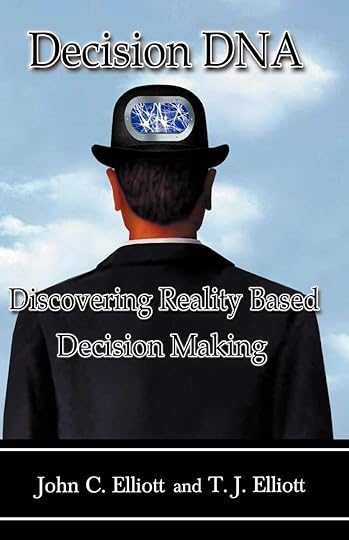 Smarter Innovation: Using Interactive Processes to Drive Better Business Results edited by Katrina Pugh — with Madelyn Blair, V. Mary Abraham, Catherine Shinners, John Hovell, et al.Table of Contents, Executive Summary, and Chapter 1
Smarter Innovation: Using Interactive Processes to Drive Better Business Results edited by Katrina Pugh — with Madelyn Blair, V. Mary Abraham, Catherine Shinners, John Hovell, et al.Table of Contents, Executive Summary, and Chapter 1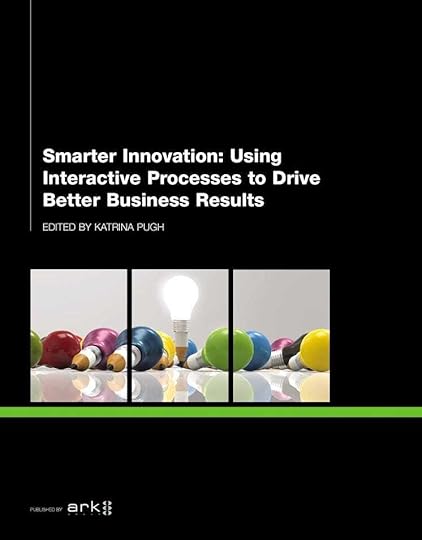 Chapter 1: Escaping gravity: Three kinds of knowledge as fuel for innovation in an operate and maintain companyThe gravity of successA common languageInnovation know-howConclusionPerformance Through Learning (Improving Human Performance) edited by Kurt April, Nick Milton, and Carol GorelickPDFChapter 15
Chapter 1: Escaping gravity: Three kinds of knowledge as fuel for innovation in an operate and maintain companyThe gravity of successA common languageInnovation know-howConclusionPerformance Through Learning (Improving Human Performance) edited by Kurt April, Nick Milton, and Carol GorelickPDFChapter 15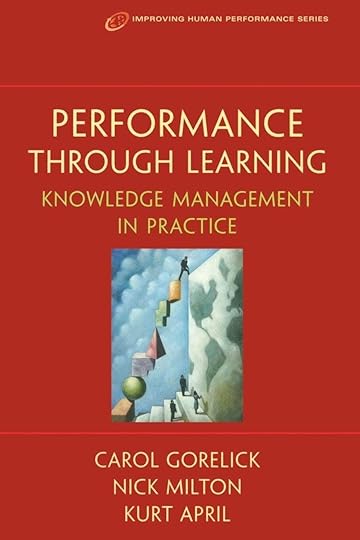 Chapter 15: Piloting Knowledge Management: Lessons Learned from the Small-Scale Approach to Design and Implementation at ETS — with Felicia DeVincenziCorporate OverviewBusiness HighlightsDrivers for the Development of the Knowledge Management Program or InitiativePlanningThe First Wave: Best Practices in Responding to RFPsThe Second Wave: The Knowledge-Intensive DecisionsInquiryThe Third Wave: Construction of the Knowledge AssetProblems/ConcernsLessons LearnedReferencesHonor: A Comedy about Office Politics
Chapter 15: Piloting Knowledge Management: Lessons Learned from the Small-Scale Approach to Design and Implementation at ETS — with Felicia DeVincenziCorporate OverviewBusiness HighlightsDrivers for the Development of the Knowledge Management Program or InitiativePlanningThe First Wave: Best Practices in Responding to RFPsThe Second Wave: The Knowledge-Intensive DecisionsInquiryThe Third Wave: Construction of the Knowledge AssetProblems/ConcernsLessons LearnedReferencesHonor: A Comedy about Office Politics [image error]
[image error]
October 31, 2025
12 Steps to KM Success: A Guide to Implementing Knowledge Management
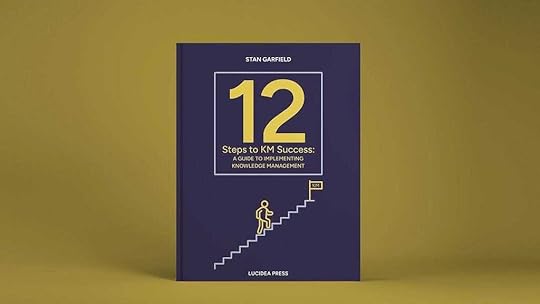
This is my seventh book as sole author, and the fifth published by Lucidea Press. It has two dozen chapters. The first dozen are the 12 steps to follow in implementing knowledge management (KM). The second dozen consist of practical advice and in-depth recommendations.
Regardless of whether you are starting from scratch, taking over an existing program, or adjusting your current KM efforts, this book can help. When initiating a new program, try following the twelve steps, not necessarily in order but in whatever sequence makes the most sense. For existing initiatives, focus on the steps that may have been missed or that might not have been executed effectively.
Chapter 1 offers links to carefully curated lists of resources for learning, problem solving, and assistance. These provide a wealth of additional information for every stage of a KM program. Chapters 2–12 cover the rest of the twelve steps to success.
Chapters 13 through 24 contain useful insights, priorities, issues, lessons learned, knowledge nuggets, maxims, pitfalls to avoid, and proven practices. These are based on my 30 years as a practicing knowledge manager and can be applied to help make a KM program even more successful.
LinksBook Announcement: Ready to ReadDownload the free eBookOrder a hard copy from AmazonMy Other BooksMy KM Site
12 Steps to KM Success: A Guide to Implementing Knowledge Management is your comprehensive guide to programmatic implementation of successful KM components.
Successful knowledge management can improve internal communication, reduce duplication of effort, boost productivity, reduce risk from staff turnover, add value to client relationships, and deliver meaningful impact on competitiveness and profitability.
An effective KM program requires processes that facilitate knowledge sharing, capture, and reuse — and knowledge managers enable those key processes by implementing and integrating the right tools.
If you are considering initiating a knowledge management program, 12 Steps to KM Success: A Guide to Implementing Knowledge Management is an essential introduction to the subject area. A checklist for success, it offers straightforward advice from planning and strategic direction all the way through to program implementation of the components used to support successful KM.
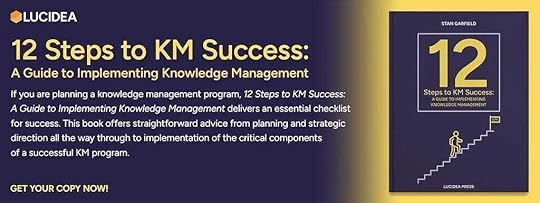 Table of ContentsIntroductionChapter 1: Learn About the FieldChapter 2: Identify 3 ObjectivesChapter 3: Get Leadership Commitment and Assess CultureChapter 4: Answer 9 Questions on People/Process/TechnologyChapter 5: Articulate Your VisionChapter 6: Define the KM StrategyChapter 7: Define Compelling Use CasesChapter 8: Define Program GovernanceChapter 9: Specify Modes of Knowledge FlowChapter 10: Select and Implement KM ComponentsChapter 11: Integrate, Innovate, and IterateChapter 12: Share, Seek Feedback, and Pay It ForwardChapter 13: 10 KM InsightsChapter 14: 10 KM Program PrioritiesChapter 15: 15 KM IssuesChapter 16: 10 KM Lessons LearnedChapter 17: 10 Knowledge NuggetsChapter 18: 36 KM MaximsChapter 19: 40 KM Pitfalls to AvoidChapter 20: Knowledge Sharing and ReuseChapter 21: How to Motivate Knowledge SharingChapter 22: How to Show the Value of KMChapter 23: How to Build Expertise in KMChapter 24: News of KM’s Death is Greatly ExaggeratedDedication
Table of ContentsIntroductionChapter 1: Learn About the FieldChapter 2: Identify 3 ObjectivesChapter 3: Get Leadership Commitment and Assess CultureChapter 4: Answer 9 Questions on People/Process/TechnologyChapter 5: Articulate Your VisionChapter 6: Define the KM StrategyChapter 7: Define Compelling Use CasesChapter 8: Define Program GovernanceChapter 9: Specify Modes of Knowledge FlowChapter 10: Select and Implement KM ComponentsChapter 11: Integrate, Innovate, and IterateChapter 12: Share, Seek Feedback, and Pay It ForwardChapter 13: 10 KM InsightsChapter 14: 10 KM Program PrioritiesChapter 15: 15 KM IssuesChapter 16: 10 KM Lessons LearnedChapter 17: 10 Knowledge NuggetsChapter 18: 36 KM MaximsChapter 19: 40 KM Pitfalls to AvoidChapter 20: Knowledge Sharing and ReuseChapter 21: How to Motivate Knowledge SharingChapter 22: How to Show the Value of KMChapter 23: How to Build Expertise in KMChapter 24: News of KM’s Death is Greatly ExaggeratedDedicationThis book about twelve steps is dedicated to twelve thought leaders: Chris Collison, Tom Davenport, Steve Denning, Nancy Dixon, Sue Hanley, Patrick Lambe, Nick Milton, Carla O’Dell, Kate Pugh, Dave Snowden, Tom Stewart, and David Weinberger. These KM visionaries were major influences on my thinking and development in the field of knowledge management. I am also fortunate to be able to call them my friends.
 Acknowledgements
AcknowledgementsI wish to thank Lucidea for their long-time support of my writing. I also greatly appreciate my editor, Sarah Nichols, for our ongoing collaboration.
BackgroundThis is my 30th year in field of knowledge management. In 1996, I was asked by the senior vice president of my business unit at Digital Equipment Corporation (DEC) to start a knowledge management program after we visited Ernst & Young’s Center for Business Knowledge in Cleveland, Ohio. When he heard that Ernst & Young had a Chief Knowledge Officer, he turned to me and said, “I want you to be our CKO.” This made it sound simple, but it turned out that a lot of time and effort were needed to get DEC’s KM program off the ground.
Along the way, I had to endure many ups and downs, enlist allies in the cause to join my virtual team, get executive sponsorship from a succession of leaders, increase investment and commitment to the program, deal with constant organizational change, adjust to changing technology, migrate from and integrate with legacy software, exercise diplomacy with many other groups, and cope with two large-scale corporate mergers.
Much of knowledge management has stayed the same during the past thirty years. The fundamental goals have not changed, the challenges are much the same, and the basic categories of people, process, and technology still apply. What has changed is the technology, the acceptance of KM as a strategic initiative, and the willingness of organizations to assign people to dedicated knowledge management roles.
We still struggle to get people to spend time sharing and reusing knowledge, it can still be hard to find information at the time of need, and expense budgets are still tight. But there are more people practicing KM today and there are powerful technologies that better address existing requirements and enable new capabilities.
The future challenges for knowledge management include creating new knowledge to stimulate innovation, expanding and better exploiting people networks, making it easier to find information when it is needed for better decision making, and effectively incorporating artificial intelligence (AI) by developing practical use cases. Knowledge management is here to stay, and by applying its fundamental concepts of learning from experience, reusing good ideas, and avoiding past mistakes, KM practitioners can ensure that their initiatives will succeed.
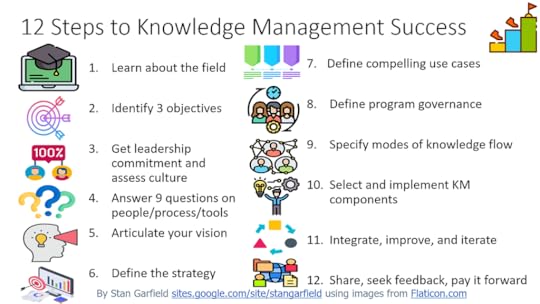
 [image error]
[image error]
October 23, 2025
Maggie Starkey: Profiles in Knowledge — Rising Stars Series
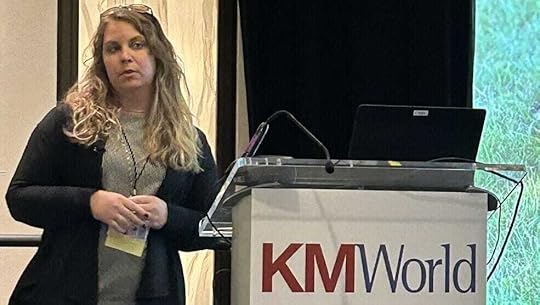
This is the 120th article in the Profiles in Knowledge series featuring thought leaders in knowledge management and the fourth in the Rising Stars Series. Rachel Teague suggested this series and conducts the interviews.
Maggie Starkey is an experienced professional with a passion for knowledge management who played a key role in the development of the KM program at Kraton Corporation. She continually improves, maintains, and develops new activities, processes, and tools to ensure knowledge is flowing and users can find and apply knowledge and expertise effectively.
Maggie is a change agent, communicator, strategist, project manager, and Microsoft 365 geek. Her specialties are knowledge management, leadership, change management, communication, and User Experience (UX).
Background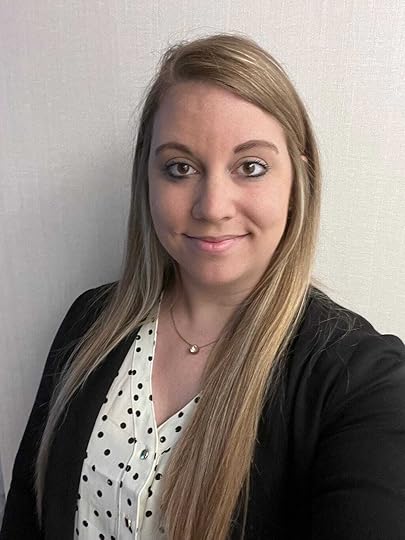 EducationKent State University — Master of Science, Knowledge Management, 2022–2023Ashford University — Bachelor’s Degree, Public Relations and Marketing, 2015–2017Washington State College of Ohio — Associate’s Degree, Business Management, 2011–2014Experience
EducationKent State University — Master of Science, Knowledge Management, 2022–2023Ashford University — Bachelor’s Degree, Public Relations and Marketing, 2015–2017Washington State College of Ohio — Associate’s Degree, Business Management, 2011–2014ExperienceKraton Corporation
Knowledge Management Specialist II, 2024 — PresentKnowledge Management Specialist. 2021–2024R&D Assistant, 2013–2021Contract Support, 2013ProfilesLinkedInKnowledge for Development PartnershipContentLinkedIn PostsLinkedIn ArticlesKnowledge Management — Community or Profession?KM is NOT just a profession. It is a group of some of the most amazing community. It is the mom in the crowd cheering for their child to score the winning goal. It is the teacher helping a student. It is a therapist when you just need someone to listen and then help you work through it. It is the neighbor down the street that helps mow your lawn while you are away, just to help you out. KM is a community.Communities and ConferencesSIKM Leaders CommunityAPQC
1. Assessing Knowledge Management Maturity with the KM-CAT
How to Leverage APQC’s KM Maturity Assessmenthttps://medium.com/media/e5afa24b9858a9c19be9e9ee8bb44877/hrefSlides2. Developing Critical Skills for Process and Knowledge Professionals — Interview Summary
Developing Critical Skills for Process and Knowledge Professionalshttps://medium.com/media/a4f4db0d6c8517d06d387ed00e3a70de/href3. 2024 Conference: Applying People Skills to Engage Teams & Impact Change
SummarySlides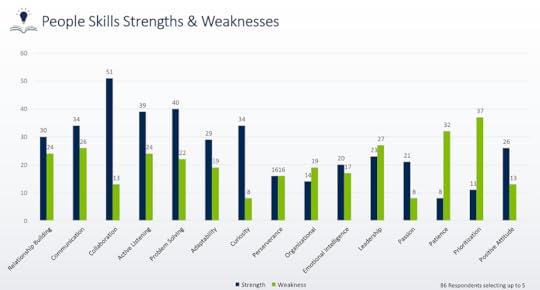 KMWorld2025 B204: KM IRL: Stories of Struggle, Strategy, Success2024 C204: People Skills: Teams & KM in the Era of AI — Slides
KMWorld2025 B204: KM IRL: Stories of Struggle, Strategy, Success2024 C204: People Skills: Teams & KM in the Era of AI — Slides Midwest KM Symposium2023: How to Make KM StickSummarySlides
Midwest KM Symposium2023: How to Make KM StickSummarySlides Podcast
PodcastBecause You Need to Know with Edwin K. Morris
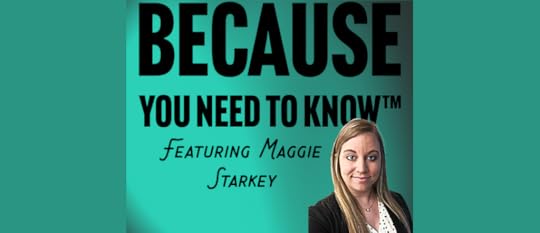 The October 2025 Rising Star Interview by Rachel TeagueRising Star Profile: Maggie Starkey
The October 2025 Rising Star Interview by Rachel TeagueRising Star Profile: Maggie StarkeyI first met Maggie at the Midwest KM Symposium at Kent State University back in June 2023, where we were both relatively new to the speaking circuit. At that point, Maggie was already deeply embedded in the KM field, well into her career at Kraton and nearing completion of her Master’s in Knowledge Management at Kent State. I, on the other hand, was still finding my footing as a newer voice on stage.
I still remember sitting in her session, completely in awe. The depth of her insight, the clarity of her delivery, and the sheer amount she had accomplished in such a (relatively) short time were genuinely inspiring. I was a little intimidated, especially since I was slated to open our joint session later that same day, but that feeling quickly shifted to admiration. Maggie’s warmth, authenticity, and openness made it clear that she wasn’t just a skilled practitioner; she was a true collaborator and community builder.
Since that first encounter, Maggie and I have shared stages, swapped stories, and cheered each other on at more than a few conferences. Watching her continue to grow, contribute, and lift others in the KM community has been inspiring. She embodies everything the Rising Star Series celebrates: curiosity, courage, and a commitment to making knowledge work for people, not just systems, while bringing fresh perspective and amplifying the next generation of voices shaping our field.
The KM landscape is built on the brilliance of those who came before us, but evolution is essential. Across conferences in recent years, I’ve seen a wave of emerging leaders reimagining established practices and infusing the field with renewed energy and vision. Honoring the past while embracing what’s next is where the real magic happens — and Maggie represents that bridge beautifully.
InterviewWhat led you into KM, and why are you passionate about it?
KM honestly just fell into my lap. Our R&D team was piloting these “fancy” interview-style sessions called elicitation sessions with APQC, and I was asked to support the project manager running the pilot. That turned into helping two different project managers navigate what this whole concept of KM was, and within about six months I found myself officially in charge of building and leading our R&D KM program.
It’s hard to put into words exactly why I’m so passionate about KM. I just know I absolutely love it. It lights a fire in me on a regular basis. Part of it is the work itself, which is always changing and keeps me on my toes. Part of it is knowing I’m helping my team succeed. And a huge part of it is the people: KMers are some of the most generous, kind-hearted humans I’ve ever met, and I’m grateful to be part of that community. The work takes dedication, persistence, and sometimes even a few tears, but I’m never alone in it. My peers and fellow KMers are always there to cheer me on.
What are your specialties?
I like to joke that I’m a double-edged sword. On one edge, I’m the technical builder. I love taking Microsoft 365 tools and creating SharePoint sites, knowledge repositories, or simple automated systems that make life easier for teams. On the other edge, I’m all about the people side: culture, change management, learning, collaboration, facilitation, training.
That balance is key for me. After a lot of “peopling,” I recharge by building a SharePoint site or diving into M365 tools. On the flip side, when I’m facilitating a workshop or coaching a team, I’m in my absolute element. KM scratches both sides of my brain, technical and creative, and that combination ultimately enables stronger cultures where collaboration and learning thrive.
It’s taken me a while to discover my true specialties, but over the last year I’ve really dialed in on what I enjoy most and where I add the most value. Leading training, facilitating workshops, and helping people adjust to change without fear are the moments that energize me. At the heart of it, I just love helping others grow, develop their skills, and connect with each other.
To me, all of this ties directly into culture and change management. Every specialty I’ve developed contributes to building a positive, collaborative culture. And honestly, there’s nothing better than being part of a strong, connected team where knowledge flows naturally.
Who are your influences, and why?
This is always the hardest question because there are so many. If I try to list names, I’ll inevitably leave someone out, so I’ll say this: my influences come from the community itself. Conferences, LinkedIn connections, book authors, Women in KM, Strategic Intelligence Council, the random conversations over coffee at events — all of it shapes me. If I participate in a session and hear something brilliant, I’ll follow that person, read their book, or reach out to learn more. Every interaction adds something to how I approach KM.
Outside of KM, my parents shaped me more than anyone in modeling what hard work and determination looks like in action. My dad especially left his mark at the beginning of my career at Kraton. When I learned I got my first job at Kraton at 19 my dad still worked there in a different department; he left a note on my desk while I was in HR that said: “Hard work and dedication always reward.” I still keep that piece of paper, and I think about it often, especially when KM feels overwhelming or slow moving. It reminds me that even when the payoff isn’t immediate, the work is worth it.
Finally, in terms of thought leaders, Brené Brown resonates with me deeply. Her message about vulnerability and people-first leadership mirrors how I try to lead. I don’t have much of a filter and I believe transparency is the best approach. Brené’s work gives me language and courage to lead with heart first, even in a corporate setting.
If you could only implement one KM component, what would it be, and why?
Most people would probably say “communities,” but I believe communities only work if the culture is right. You need team members who feel safe and willing to share what they know for communities to truly thrive. It may sound like a tall order, but if I could only implement one component, I’d focus on culture.
When I first saw culture listed as a KM component in Stan Garfield’s list, I was honestly surprised but thrilled. It validated what my own research had shown about the importance of building relationships, trust, and active listening. Those pieces are the real foundation for everything else.
A recent example drives this home. We launched a new community of practice, and the leader left time at the end of the kickoff for open discussion, but very few people spoke up. I encouraged her afterward to add a team-building exercise in the next session so people could get to know each other first. That simple step helps create trust and makes members feel comfortable enough to share.
Some argue that you can’t change culture until you put other KM components in place, and maybe they’re right in some cases. But in our program, we didn’t start with communities or anything flashy. We started small: with knowledge transfer, communication, trust-building, and change-focused activities. What I’ve learned is that people are doing KM every day without realizing it. Highlighting those everyday success stories shows value and helps shift the culture.
That “people first” approach is why our program has grown so much where team members feel engaged and want to be part of it. We may not yet be as advanced in every component as other companies, but we’ve built a strong foundation of people who are invested. Now we can continue to increase our maturity and expand our processes from that solid base.
What is your vision for a successful KM program?
My vision, and the vision I’ve helped shape at Kraton, is a company where collaboration, learning, and sharing aren’t extra tasks, but second nature. In that kind of environment, knowledge flows seamlessly across boundaries without friction. Insights don’t get stuck; they’re turned into action that drives impact at every level of the business.
When KM is woven into the culture this way, it stops being a separate initiative and becomes part of how people work every day. That’s when the magic happens, when extraordinary performance isn’t forced, but naturally follows from a culture built on trust, sharing, and learning.
What are you most proud of in your career so far?
One of the things I’m most proud of is that I’ve completely created my own path. Every role I’ve ever held has been brand new, built from the ground up, which is both exhausting and rewarding. There was no career ladder to climb; I had to forge my own. I started at my company when I was 19, originally as a temporary contractor on a three-month assignment. That role kept getting extended, and after six months I was hired full-time into a brand-new position for a brand-new pilot plant. I got to shape the role myself, and over time, added more responsibilities from across our R&D team and plant.
Several years later, I was pulled into a project focused on capturing knowledge from retirees, and I was immediately fascinated. Shortly after, knowledge management formally took root in R&D, I found myself leading the effort. That was the moment I really “found” myself professionally.
The journey hasn’t always been easy. For years, I struggled to fully believe in my own value, even as others told me they saw it. Presenting at conferences and getting feedback from peers helped me gain confidence, and receiving one of our company’s most prestigious leadership awards in 2024 was a true career highlight. It was a quiet dream I’d had since my first town hall meeting. It validated years of persistence and gave me a chance to reflect on everything our R&D team had accomplished in such a short time and how our work was spreading across the company. It was recognition of the impact I’ve made and a reminder that KM is valued. That meant a lot, especially because so much of what I’ve done didn’t fit into traditional career paths.
I’m also proud of the ways I’ve carved out impact beyond KM. Owning a small business and hosting community fundraisers, including one that raised funds for a local Humane Society, has reminded me that making a difference comes in many forms. At the end of the day, what motivates me most is helping people. Whether it’s at work, at a conference, or in my community, knowing I can help others grow and succeed is the real reward.
What would you like to accomplish in the short term and long term?
Short term: Right now, I’m focused on building a change management model and process for our company. It started with me running a few training sessions in R&D, and it spread quickly across the organization. Now I’m developing a full framework and workshop series so leaders and teams everywhere can use change management in a practical, people-first way. This work excites me because it combines my two biggest passions: culture and change.
Long term: My dream professionally is to eventually lead a company-wide team that brings together knowledge management, change, communication, and facilitation into one powerful capability for the business. At the same time, I keep the door open to wherever life leads. The specifics may shift, but the heart of it stays the same: I want to be in a role, whatever that looks like, where I’m making a positive impact on people’s lives.
What are your top three knowledge nuggets/lessons learned?
Patience. If there’s one thing KM has taught me above all else, it’s patience. Nothing in this field happens overnight. We’re often working with limited budgets, small teams, and enormous expectations all while trying to bring along people who may not understand why KM matters (or who are outright resistant to it). Early on, I had very little patience, and KM stretched me in ways I didn’t expect. Now I see patience as not just waiting, but actively holding space: being resilient, creative, and steady even when progress feels slow. Some days it takes everything in me not to get frustrated. The truth is, the most meaningful changes in culture, collaboration, and trust take time, and patience is what keeps me showing up.Meet people where they are. One of the best pieces of advice I’ve ever learned is to meet people where they are, not where I wish they were. In KM and change management, this principle is everything. If I walk in with a big vision but ignore where people are starting from, I lose them before I begin. But if I take time to listen, to understand their context, their hesitations, and even their frustrations, I can walk alongside them instead of pulling them forward. Trust is built in those moments, not by forcing change, but by showing empathy and celebrating small steps. This lesson has saved me countless times, especially when introducing new processes or tools. Meeting people where they are is what transforms resistance into partnership.Think big, execute small. KM people tend to be dreamers — we see the big picture, we want to connect dots across the organization, and we envision possibilities others can’t yet see. That’s powerful, but it can also be overwhelming if you try to do everything at once. I’ve learned the hard way that you can’t deliver a grand vision overnight. The real magic happens when you take that big vision and break it down into small, practical steps. Each pilot, each quick win, each success story builds momentum. Those small steps make the big goals feel achievable and, over time, they add up to real transformation. It’s the difference between inspiring people with what’s possible and losing them with what feels impossible.What is something in the KM space you’d like to learn more about?
AI. I know the basics, but I want a deeper understanding in how different AI works, the value it can bring, and how KM can leverage the technology. Listening to conversations with experts that can explain it in simple terms has opened my eyes to the possibilities, and I’m eager to learn more without getting lost in the weeds.
[image error]October 17, 2025
The LEXICON Framework Part 5: Cultivate a Knowledge-Sharing Culture

This is my fifth post in a seven-part series based on the comprehensive LEXICON Knowledge Management (KM) framework created by legal KM specialist Clare Bilobrk. LEXICON is equally valuable in workplaces other than law firms, and is an acronym for:
Link KM to daily workflowsEmpower championseXplain the valueIntegrate with existing systemsCultivate a knowledge-sharing cultureOptimize for ease of useNurture feedback loopsIn this post, I’ll focus on Clare’s fifth point:
Elements of a Knowledge-Sharing Culture
Cultivate a knowledge-sharing culture — Recognize contributions, from formal content creation to informal expertise-sharing, in visible and meaningful ways.
In my experience, a workplace knowledge-sharing culture includes three critical elements:
Knowledge reuse is valued over reinvention.Sharing knowledge helps you advance in your career.In the process of innovating, failure is encouraged — as long as the lessons learned are shared so that similar failures are prevented.To cultivate a knowledge-sharing culture, create a vision of how things should work in the organization. Explain how sharing, innovating, reusing, collaborating, and learning should be done. Have the senior executive and the leadership team communicate the vision widely and regularly. And visibly recognize and reward those who contribute their knowledge.
To help sustain a knowledge-sharing culture, ask your senior executive to endorse, communicate, and exemplify the following credo:
I will practice and reward caring, sharing, and daring — caring for others, sharing what I know, and daring to try new ideas.I will look for opportunities to help, thank, and praise others.I will regularly recognize those who share their knowledge, ask questions in communities, and provide answers and support to others.Recognize Desired BehaviorsKnowing that you have earned the attention, respect, and admiration of others, especially senior leaders, can be very gratifying. And you are more likely to repeat desired knowledge-sharing behaviors if you know that important people will take notice.
There are many ways to provide employee recognition, including:
To take advantage of the competitive nature of many individuals, an incentive points system can be implemented to award points for desired behaviors, rank those earning points, and report on weekly, monthly, yearly, and lifetime standings. The points awarded can be used for recognition, tangible rewards, or for demonstrating achievement of goals for performance reviews and promotions. The point totals and rankings can be reported on websites, in newsletters, and via messages to employees and managers.
Each desired task can have a certain point value, which can be granted automatically as a result of performing that task. The points earned can be displayed on a website to create a friendly competition among all users. They can visit the site to see how they stack up against their peers, the idea being to create some fun, to show that people are in fact spending some of their time on KM, and to recognize them for doing so.
For example, points can be granted for the following:
Contributing a document to a knowledge repository.Posting or replying to a threaded discussion in a community.Posting a story on the benefits of reusing content from a knowledge repository or a community.Thankful ThursdaysAnother way to nurture a knowledge-sharing culture within your organization is through peer recognition. If you have an Enterprise Social Network (ESN) or an online community, a good way to encourage peer recognition is to promote a weekly theme called “Thankful Thursdays.” Encourage people to post once a week using the hashtag #ThankfulThursday to recognize colleagues who have demonstrated good knowledge-sharing behaviors. And lead by example by posting every week.
Praise people for:
Answering questions, responding to queries, or supplying needed resources.Sharing information, Working out Loud, or suggesting good ideas.Creating content and contributing it to communities and knowledge repositories.Presenting at meetings, community calls, or conferences.Posting queries in the ESN or online community instead of via email so that others can answer and benefit.Next post — Part 6: Optimize for ease of use
[image error]October 4, 2025
The LEXICON Framework Part 4 — Integrate with Existing Systems

This is my fourth post in a seven-part series based on the compelling LEXICON Knowledge Management (KM) framework created by legal KM specialist Clare Bilobrk. LEXICON is an acronym for:
Link KM to daily workflowsEmpower championseXplain the valueIntegrate with existing systemsCultivate a knowledge-sharing cultureOptimize for ease of useNurture feedback loopsIn this post, I’ll take a closer look at Clare’s fourth point:
Why Integration Matters for KM
Integrate with existing systems — Embed KM tools within familiar platforms, minimizing the need for multiple logins or disruptive context-switching.
With proper integration, KM systems (such as Presto) can be embedded into existing workflows to ensure knowledge is accessible where people already work.
In my experience, achieving this means knowledge managers should seek out business units, functions, and departments not yet using KM tools but likely to benefit. Then, propose, pilot, and implement such tools for them.
For example, in the marketing function, integrate blogging into their communications processes. For the IT help desk, integrate threaded discussions into their support processes. In the Human Resources (HR) function, integrate skills profiling and expertise location with the personnel database. In Learning & Development (L&D), integrate proven practices and lessons learned into the Learning Management System (LMS).
Business Systems and KM ComponentsHere are examples of business systems and the KM components that can be used to integrate processes within those systems. Links to details about each of the KM components are available in the appendix.
Sales and MarketingBusiness: Customer Relationship Management (CRM), Sales Management, Marketing Management, Lead Generation and Tracking, Order Processing and eCommerce, Reservation ManagementKM: Workflow, process automation, analytics and business intelligence, artificial intelligence, blogs, podcasts and videos, portals, repositories, wikis, syndication and aggregation, content managementOperationsBusiness: Enterprise Resource Planning (ERP), Operations Support, Engineering, Manufacturing, Distribution, Logistics, Inventory and Stock Control, Scheduling, Process Control, ProcurementKM: Workflow, process automation, portals, analytics and business intelligence, artificial intelligence, portals, repositories, wikisResearch & Development (R&D) and MedicalBusiness: Research Management, Laboratory Information Management System (LIMS), Scientific Information Management, Intellectual Property Management, Clinical Information System (CIS), Hospital Information System (HIS), Electronic Medical Record (EMR), Electronic Health Record (EHR), Drug Information System (DIS)KM: Creation, workflow, process automation, analytics and business intelligence, artificial intelligence, portals, repositories, wikisFinanceBusiness: Accounts Payable, Accounts Receivable, General Ledger, Budgeting and Planning, Forecasting and Reporting, Expense Management, Funds Transfer, Investment and Portfolio Management, Shareholder and SEC, Tax ProcessingKM: Workflow, process automation, analytics and business intelligence, artificial intelligence, valuation, portals, repositories, wikisHuman ResourcesBusiness: Human Capital Management (HCM), Talent Management, Recruiting and Hiring, Personnel Data, Payroll, Staffing, Performance Management, Time Entry, Expense Reporting, Travel, Learning, Learning Management System (LMS)KM: Workflow, process automation, analytics and business intelligence, artificial intelligence, portals, repositories, wikis, E-learningLeadership and ManagementBusiness: Executive Information System (EIS), Management Information System (MIS), Decision Support System (DSS)KM: Proven practices, analytics and business intelligence, artificial intelligence, portals, repositories, wikisProgram ManagementBusiness: Portfolio Management, Project Management, Project Team CollaborationKM: Capture, reuse, lessons learned, proven practices, collaboration, team spaces, web conferencing, portals, repositories, wikisPartnering with IT for Seamless IntegrationWork with your partners in the IT department to make KM tools work effectively with standard platforms. This allows KM systems to take advantage of functionality available outside those systems, and for standard platforms to provide data to and obtain data from KM systems.
Integrate knowledge management with widely used business platforms. Feed data into these systems, extract data from them and feed it into KM systems, connect workflows, and enable enterprise search to find content. Here are examples of popular platforms to consider.
Customer Relationship Management (CRM): Salesforce Sales Cloud, Oracle CRM, Microsoft Dynamics 365Enterprise Resource Planning (ERP): SAP, Oracle NetSuite, Microsoft Dynamics 365Human Capital Management (HCM): SAP SuccessFactors, Workday, Oracle PeopleSoftThe major technology platforms provide multiple opportunities for integration. Take advantage of their capabilities for knowledge management, office automation, artificial intelligence, and collaboration. Here are examples for two of the most popular platforms.
Google: Gemini, Search, Docs, Drive, G Suite, Meet, ChatMicrosoft: Copilot, Microsoft 365, Outlook, OneNote, Teams, SharePoint, Engage, OneDriveIf it is not integrated with an organization’s infrastructure and workflows, a KM system will never reach its full potential, no matter what features and functions it offers. Knowledge management tools should integrate with existing systems and applications, leverage existing assets (including people and repositories), and work seamlessly with the current IT infrastructure.
Appendix: Details on KM ComponentsAnalytics and Business IntelligenceArtificial IntelligenceBlogsCaptureCollaborationContent ManagementCreationE-learningEnterprise SearchExpertise LocationLessons LearnedPodcasts and VideosPortalsProcess AutomationProven PracticesRepositoriesReuseSyndication and AggregationTeam SpacesValuationWeb ConferencingWikisWorkflowNext post — Part 5: Cultivate a knowledge-sharing culture
[image error]September 30, 2025
The LEXICON Framework Part 3: 10 Ways to eXplain the Value of Knowledge Management

This is my third post in a seven-part series based on the compelling LEXICON Knowledge Management (KM) framework created by legal KM specialist Clare Bilobrk. LEXICON is an acronym for:
Link KM to daily workflowsEmpower championseXplain the valueIntegrate with existing systemsCultivate a knowledge-sharing cultureOptimize for ease of useNurture feedback loopsIn this post, I’ll focus on the third point:
10 Ways to Establish the Value of KM
eXplain the value — Clearly connect KM use to real-world benefits: reduced duplication, faster turnaround, higher-quality outputs, and better client service.
Explaining the value of knowledge management and establishing how your KM program will achieve that value are essential for gaining initial sponsorship and ongoing management support. Here are ten ways to do just that.
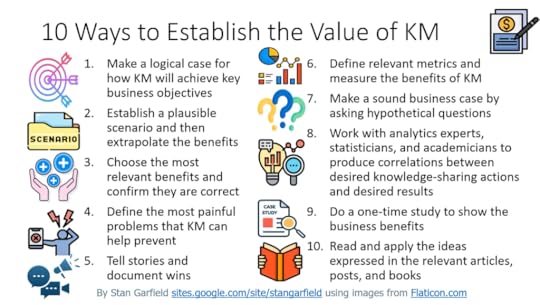 1. Make a Logical Case
1. Make a Logical CaseMake a logical case for how the initiative will help achieve the key business objectives of the organization.
For example, if the business objectives are increasing profits, accelerating sales, and improving customer satisfaction, explain how the elements of the program will have a positive impact on these. If profits increase, sales accelerate, and customer satisfaction improves, and there is a rational explanation for how knowledge management supported these results, then take partial credit.
2. Establish a Plausible ScenarioEstablish a plausible scenario and then extrapolate the benefits.
For example:
If we save one project from repeating the same mistakes as previous projects, that could save $2 million, which will more than pay for the program. If we repeat this, the impact on profits is very large.If by responding quickly to an opportunity with a proven solution using acknowledged experts, we win one $10 million project that we otherwise would have lost, that’s incremental revenue of $10 million. If we repeat this, the impact on revenue is very large.If by ensuring that the best engineering product knowledge is reused, we avoid one product recall, we save the company hundreds of millions of dollars.This type of business case can be very persuasive. Note, though, you can’t prove that the sole cause of any outcome was KM, and you can’t prove that a costly recall was avoided if it never happened. But you can point out that the probabilities of positive outcomes are significantly increased through KM.
3. Confirm the Most Relevant BenefitsChoose the most relevant benefits from the list of 15 benefits shown below and ask the program sponsor to confirm that these are the right ones. Tailor your efforts to achieve these desired benefits.
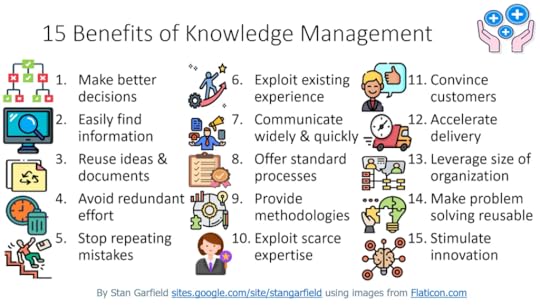 4. Define the Pain Points
4. Define the Pain PointsDefine the most painful problems that knowledge management can help prevent. Depending on the specifics of each scenario, examples could include:
Product recallsInjuries or deathsHarm to the environmentLawsuitsUnprofitable products and servicesLow employee moraleLost customersDamage to the brandInability to attract or retain talentFailure to achieve the organization’s missionDiminished productivity, revenue, growth, profit margin, market share, and shareholder valueBecoming a takeover target or going out of business5. Tell Stories to Show ValueBefore launching a program, tell stories that show the value it will provide. After the program starts, tell stories of early success, As the program matures, document wins using the voices of actual users.
6. Define the MetricsDefine relevant metrics for all stated objectives and report regularly on performance against those metrics. Pair operational metrics with business impact metrics and correlate good performance in the KM program with good results for the business. Measure the benefits of your KM efforts.
7. Make a Sound Business CaseHere are some examples of the questions you might ask when developing your case:
Do we want our people to be able to readily find deliverables from previous projects so that they can reuse them, and people who can provide useful advice on how to deliver the next one?Do we want anyone who has a question, seeks a resource, or requires help to be able to easily, quickly, and reliably get what they need?Do we want to avoid redundant effort, repeating the same mistakes over and over, and keeping important information from reaching the very people who need it?Do we want to stop making poor decisions, failing to innovate, and losing our organizational knowledge as people resign and retire?8. Correlate Actions and ResultsWork with analytics experts, statisticians, and academicians to produce correlations between desired knowledge-sharing actions and desired results, including employee advancement, project success, and financial results.
For example, Kai Riemer of the University of Sydney published a paper that states “a range of empirical studies in organizations have shown that this type of social capital (online collaboration) is associated with better individual performance evaluations, greater promotion chances and higher compensation payments as well as an increased team performance”
9. Conduct a StudyDo a one-time study to show the business benefits.
Caterpillar commissioned a one-time study by an independent consulting firm to identify the benefits and ROI for two established communities of practice: Joints and Fasteners and Dealer Service Training. The results were:
Qualitative ROI: Productivity (up 40%), Cost (reduced 25%), Speed (up 15%), Quality (up 4%)Tangible ROI: 200% for internal CoPs; 700% for external CoPsBased on these results, the Caterpillar KM program was justified. There was no need for ongoing collection and reporting of ROI, since it had been done once.
10. Apply Lessons from Existing ResourcesI encourage you to read and apply the ideas expressed in my book on this subject and in the blog posts taken from the book:
Proven Practices for Promoting a Knowledge Management Program Selling the benefits of knowledge managementProven practices for making the KM business caseBenefits of Knowledge Management, Part 1Benefits of Knowledge Management, Part 2Next post — Part 4: Integrate with existing systems
[image error]September 19, 2025
The LEXICON Framework Part 2: Empower Champions of KM

Welcome to part two of my seven-part series based on the compelling LEXICON Knowledge Management (KM) framework, created by legal KM specialist Clare Bilobrk. LEXICON stands for:
Link KM to daily workflowsEmpower championseXplain the valueIntegrate with existing systemsCultivate a knowledge-sharing cultureOptimize for ease of useNurture feedback loopsIn this post, I’ll focus on the second point:
Creating a Virtual Team of KM Champions
Empower champions — Identify respected individuals in different practice areas who can model engagement, provide informal support, and advocate for KM adoption.
To achieve this goal, I recommend creating a virtual team of KM champions that functions as an extension of the formal KM organization. It’s important to engage all groups within the organization (i.e., departments, business units, practices, regions, and functions) to collaboratively manage and communicate on all KM projects.
From each group, recruit at least one member who believes in and actively practices knowledge management to be a KM champion for that group. By engaging all constituent groups in your organization, you will ensure that the KM program is not isolated from its users. KM champions from each group should continue to directly report to their current groups but become part of a virtual KM team. Ideally, they should feel equally devoted to their home groups and to the virtual KM team.
The Dual Role of KM ChampionsThe KM champions have a very important two-way role. They represent the needs of their groups to the central KM staff, and they communicate the direction of the KM program to their groups. They are champions of their groups to the KM program, and they are champions of KM to their groups.
Key Responsibilities of KM ChampionsThe role of the KM champion includes:
Attracting interest in the KM program based on their reputation and the respect they have earned.Leading by example, including demonstrating all desired knowledge sharing behaviors.Answering questions, showing how to use KM processes and tools, and providing support.Communicating KM messages to other members of their group.Soliciting ideas, suggestions, and feedback on the KM program to take back to the KM team.Working closely with the leader of their group to help them with messaging and setting a good example.Praising and recognizing other members of their group for demonstrating desired behaviors.Collaborating with other KM champions as part of the KM virtual team to accomplish the goals of the KM program.Piloting new initiatives and evaluating prototypes.Conducting training on KM processes and tools.Keeping the Virtual Team ConnectedThe central KM staff should view the virtual KM team as a decision-making body and keep them informed on current developments and future plans. A good way to do this is by holding regular virtual meetings, e.g., every other week, to do the following:
Communicate progressReceive feedback on current effortsSolicit input on future directionEducate and inform about new ideas, industry trends, and what other organizations are doingStimulate discussionsMake decisionsInitiate pilotsEvaluate prototypesCollaborate on analyzing information, solving problems, and innovatingShare ideas, success stories, and lessons learned to encourage reuseTo deepen connections between the KM champions, it’s desirable to hold annual in-person meetings to get all of them informed, energized, and working together effectively.
Although it is usually challenging to get approval for large meetings involving significant travel costs, it is nonetheless valuable to do so. As soon as there is a critical mass of KM champions, start planning the first meeting of the virtual KM team.
The goals for meeting in person are to establish trust between team members; communicate the vision, mission, expectations, roles, and plans; solicit feedback and inputs; and provide the environment for team members to collaborate.
Plan the meeting carefully. Prioritize interactive workshops, birds-of-a-feather sessions, group discussions, and storytelling over long, passive presentations. Build in plenty of time for small group meetings, networking, and conversations.
Invite the senior executive sponsor of the KM program to attend all or part of the meeting to present, answer questions, and mingle with the attendees. Invite an outside speaker on an important topic. Give all participants a book and ask them to read it and discuss it in a threaded discussion after they return from the meeting.
By the end of the meeting, everyone should understand the program’s direction, feel that their voices were heard, and be motivated to charge ahead. They will be more effective in collaborating virtually with one another over the course of the next year.
Leading by ExampleDeveloping a virtual team of KM champions to help run a KM program is leading by example, practicing what you preach, and modeling desired behaviors. The KM champions experience good examples of meeting virtually and face to face, collaborating across organizational boundaries, and using KM tools such as online threaded discussions. In turn, they are better equipped to advocate for and embed KM within their groups.
Next post — Part 3: eXplain the valueAbout Clare Bilobrk, creator of the LEXICON frameworkClare Bilobrk has more than 25 years of experience managing legal information services for national and international firms in the UK. Her work spans practical library management and legal technology, with a focus on helping information professionals demonstrate value and increase their visibility.
[image error]September 12, 2025
The LEXICON Framework Part 1: Link KM to Daily Workflows

Lucidea asked me to write a series of blog posts about the LEXICON Knowledge Management (KM) framework created by Clare Bilobrk.
Clare Bilobrk has more than 25 years of experience managing legal information services for national and international firms in the UK. Her work spans practical library management and legal technology, with a focus on helping information professionals demonstrate value and increase their visibility.
She has published on business skills for librarians, project management, current awareness, and building school libraries. She has shared her expertise with professional audiences at BIALL, ALLA, and AALL. Clare’s approach blends hands-on experience with imaginative insight, making her a respected contributor across the information and knowledge management fields.
Introducing the LEXICON Framework for KMLEXICON is an acronym for:
Link KM to daily workflowsEmpower championseXplain the valueIntegrate with existing systemsCultivate a knowledge-sharing cultureOptimize for ease of useNurture feedback loopsI am an enthusiastic user of acronyms, so I jumped at the chance to write about Clare’s contribution. LEXICON is a prescription for implementing knowledge management.
Clare’s first point:
Link KM to daily workflows — Ensure KM processes fit seamlessly into existing tasks. Automate data capture where possible and avoid separate, burdensome submission processes.
Embedding knowledge management in the flow of work has long been a goal of KM programs but has proved to be elusive. It means adding knowledge creation, capture, sharing, seeking, and reuse to business processes so that these steps happen routinely as part of normal work.
How to Embed KM in Daily WorkflowsHere are 16 suggestions for embedding KM in the flow of work.
When creating customer proposals and presentations, automatically reuse and adapt existing content to customize deliverables. Enable sharing of lessons learned by connecting creators of new proposals and presentations to those who have already delivered similar ones.Implement a knowledge capture and reuse process as part of the formal project life cycle. Automatically provide reusable content from previous projects and mandate that it be incorporated into new ones. Automatically capture content from project deliverables in a collaborative team site, cleanse it appropriately, and then contribute it to the relevant knowledge repository. Ensure that useful lessons learned are documented by project team members before they can start on their next project.For mission-oriented organizations such as the military, enhance standard procedures so that relevant lessons learned are reviewed before a mission starts and an After-Action Review (AAR) is a required when a mission is completed.When travel is being reserved, take advantage of local knowledge and the experience of past travelers. Embed reminders into calendars, inform colleagues, and suggest events to attend and people to meet at the destination. Automatically create a trip summary, expense report, and meeting notes.Enhance the staffing process so that multiple systems and databases are accessed, including internal and external skills profiles, individual calendars, previous work history, and the project scheduling system. For expertise location, automatically post in relevant communities and then update skills profiles based on those who respond.Update online learning modules based on recent employee experience and new developments in field. Enhance training with captured knowledge and link content in the knowledge repository to available training. Automatically feed newly-captured lessons learned and proven practices into the relevant training courses.Embed literature reviews and knowledge capture into the stage gates of the product development process. Stimulate innovation by spontaneously offering insightful content to creators and inventors. Capture good ideas from community discussions and send them to the appropriate organizations. Automate a closed-loop innovation process starting with capturing good ideas, feeding them to the right teams, periodically following up, and closing the loop with the sources of the suggestions when their ideas are implemented. Assist in the patent application process by filling in as much information as possible and prompting for the rest, following up to help with submissions and to disseminate details to interested parties.Feed the Customer Relationship Management (CRM) and eCommerce systems with all relevant data from all possible sources, including phone calls, text chats, chatbot interactions, email, physical mail, and in-person meetings. Supplement with information gleaned from social media, online sources, and other customer systems such as ordering, billing, and customer surveys. Deliver this at relevant moments to all employees who have customer contact.Aggregate multiple sources of competitive intelligence and deliver insights to those who can take advantage at the appropriate times. Automatically solicit inputs from employees who previously worked for competitors and use this to enhance existing sources.Ensure that as much relevant knowledge as possible is sought and provided to support decision making. Automatically track previous decisions and follow up to learn which ones were effective and incorporate that information into future recommendations.In the healthcare sector, integrate electronic medical records, prescriptions, tests, diagnoses, treatments, and scheduling. Automatically seek information from external databases, online forums, and specific experts to help diagnose conditions. Automatically prompt patients to provide status updates, alert care providers, and recommend ongoing care and remediation.Aggregate previous budgets, forecasts, and actuals as part of the budgeting and planning processes. Compare spending to other internal and external departments and point out areas for improvement. Provide regular real-time updates on budget versus actual data to all appropriate parties.Automate placing job postings and ads, processing applications, scheduling interviews, providing feedback to candidates, and securing hiring approvals. Conduct onboarding using appropriate materials, schedule required training, assess performance, and provide feedback and support to new hires.Feed search queries to internal and external search tools, monitor search logs and provide best bets for frequent search terms, and redirect queries to community online discussions and help desks as needed.Monitor email and group chat and offer to redirect messages to the right place, including community online discussions, help desks, and other potentially helpful recipients.Allow people to subscribe to topics of interest and then provide notifications, alerts, and news feeds in email, on the desktop, or on mobile devices. Source content by regularly scanning internal and external sources, including news, repositories, knowledge bases, community online discussions, Wikipedia, blogs, newsletters, podcasts, videos, and social media.Bringing It All TogetherThe overall goal should be to embed knowledge management in the basic work processes of an organization so that it is not viewed as a separate task that can be avoided. For related articles, see:
KM Process IntegrationKM Process AutomationHow AI Can Support KM ProcessesStay tuned for additional updates on how to apply the LEXICON framework to your knowledge management processes.
[image error]September 5, 2025
Knowledge Management Thought Leader 128: Jay Chatzkel
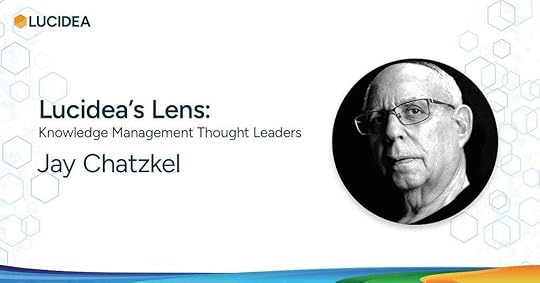
Jay Chatzkel was Principal of Progressive Practices, where he assisted organizations in transforming themselves into knowledge-based, intelligent enterprises. This included working with organizations to develop skills and practices in the areas of merger and acquisition integration, intellectual capital, knowledge management, social media, leadership, collaboration, business process management, and performance measurement.
He served on the editorial boards of the Journal for Knowledge Management, the Journal of Intellectual Capital, and the International Journal of Knowledge-Based Development and has written extensively in the field. He is the author of three books. He specialized in intellectual capital, knowledge capital, mergers and acquisitions, knowledge management, business process reengineering, and quality management.
Here are definitions for five of Jay’s specialties:
Business Process Management : A discipline that uses various methods to discover, model, analyze, measure, improve and optimize business processes. A business process coordinates the behavior of people, systems, information and things to produce business outcomes in support of a business strategy. Collaboration : Interacting with peers and colleagues to exchange ideas, share experiences, work together on projects, and solve problems. Intellectual Capital : The sum of everything everybody in a company knows that gives it a competitive edge. A metric for the value of intellectual capital is the amount by which the enterprise value of a firm exceeds the value of its tangible (physical and financial) assets. It includes human, structural, and relational capital.Knowledge Capital: Knowledge resources mobilized to produce wealth. Knowledge Capital bridges the differences between knowledge management (the flow of knowledge) and intellectual capital (the stock of knowledge). Knowledge is the resource and capital is the generated wealth. Social Media : Web- and mobile-based technologies used to turn communication into interactive dialogue among organizations, communities, and individuals.Jay created the following content. I have curated it to represent his contributions to the field. or more about Jay, see Profiles in Knowledge.
 Books
Books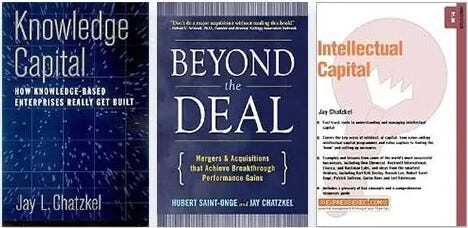 Knowledge Capital: How Knowledge-Based Enterprises Really Get Built — Preface
Knowledge Capital: How Knowledge-Based Enterprises Really Get Built — PrefaceThe idea for this book began with a conversational interview with one of the foremost theoreticians and practitioners of the knowledge movement. The goal was to quickly and easily get a sense of his understandings, practices, and ideas. In short, the aim was to get a working sense of his world, how he developed his views, and the directions that he saw the field taking. I was taken by the wealth and richness of understanding that emerged in that session. I felt that by holding similar sessions with others who have shaped and led the fields of intellectual capital and knowledge management, a body of knowledge and experience would become available that would be remarkably accessible, extremely powerful, and highly useful.
This is exactly the kind of hard-won knowledge that anyone interested in the fields of intellectual capital and knowledge management could sorely use. People at conferences and those searching through books want to know how things really work and how those ideas and approaches came into being. The conversations in this book provide precisely that kind of knowledge capital: authentic, broadly embracing, clear, and dynamic.
These linked sessions reflect the major learning principles of the field, most centrally, that knowledge is not separate from people. The contributors to these chapters are remarkably candid in sharing with readers how they developed their knowledge strategies and initiatives. They are outspoken in articulating what is important to them concerning how to craft and implement strategies, as well as their views on the roles that values, learning, performance, relationships, innovation, and change play in the development of a usable knowledge environment.
One of the remarkable aspects of this book is that while all of the contributors begin from their own unique perspectives and backgrounds, as they work their way through their experiences and practices, they each move toward a convergence of understanding. As they push the limits of what their understandings allowed them to accomplish, they reexamine their premises, cross boundaries, and forge the next stage of responses. Reaching the edge of what is currently possible has thus led to the marking out of a new generation of the field.
Engineers, like Karl Wiig, are turning their mental model on its head and saying that learning and education are what we need to focus on. Hubert Saint-Onge, who is rooted in a human resources background, sees that the traditional human resources perspective has become too balkanized and obsolete and that we must reframe our efforts to focus on developing strategic capabilities. Stephen Denning, a lawyer with a strong analytic and administrative background, has discovered that storytelling, something that is experiential, often anecdotal, and highly emotional, provides exactly the springboard for knowledge sharing that people and their institutions need. These are fresh and new understandings. The value of this book is that all of these dynamic perspectives are brought directly to the reader for review.
All of these views are, in a sense, works in progress. With the benefit of feedback, ever-broadening experience, and the incorporation of new ideas, these perspectives will go through additional iterations at a rapid pace. This means that all of these conversations could be significantly different three or five years from now, as people continue to experiment in constantly changing conditions. At the same time, these conversations are some of the best collections of insights and experience available to readers, and they are, simultaneously, the seeds of the new era in the knowledge field.
One of the opportunities afforded by this collection of knowledge perspectives is that readers can try them all individually in their own lives and in their organizational work. A second opportunity is that readers can take elements of any or all of these perspectives and fuse them to create their own new and unique approaches. Readers are encouraged to bring this material into a new focus and to synthesize it to meet their needs. This book is designed as the beginning of a conversation on creating knowledge capital, rather than as a set of prepackaged prescriptions, where one size fits all and the world does not change.
Intellectual Capital: Chapter 2Quotes
Because knowledge has become the single most important factor of production, managing intellectual assets has become the single most important task of business — Thomas A. Stewart
The new source of wealth is not material, it is information, knowledge applied to work to create value. — Walter Wriston, former chairman of Citibank
User-Based Definitions
People from a range of backgrounds have, over time, developed the discipline of intellectual capital Because each was dealing with a specific set of issues and problems, their definitions directly reflect their unique perspectives and the very specific sets of problems they were working to resolve. Each of the perspectives they developed is true for its specific user need. Thinking that only one of these definitions is correct and therefore the others are wrong is not accurate or effective. A great deal can be gained by looking at intellectual capital through these different definitions. Each lens gives us an opportunity to see our organizations differently enough to derive greater value than any single definition could provide- All of them are valid and it is up to the user to select the definition that works best to meet any particular set of needs.
A definition of intellectual capital from a managerial perspective is:
the knowledge, applied experience, organizational technology, relationships, and professional skills that provide for a competitive edge in the market.
This is a definition that takes into account the people who make up the organization, the structural dimensions of the organization, and all of the relationships of the organization. Definitions that come from a human resource and organizational development background emphasize that the intangible resources are based on implicit human experiences that must be actively turned into the stuff that provides a competitive advantage for the organization.
A more dynamic version of this definition says that intellectual capital is:
knowledge that can be converted into value or profit. It is the value embedded in the ideas embodied in people, processes, and customers/stakeholders.Social Media Strategy
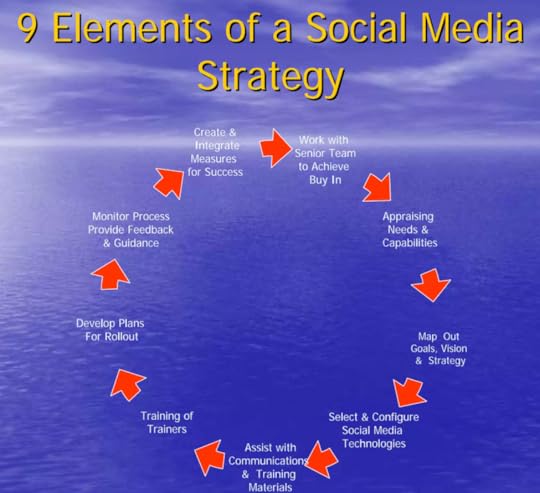 [image error]
[image error]
September 4, 2025
Fred Nickols: Profiles in Knowledge
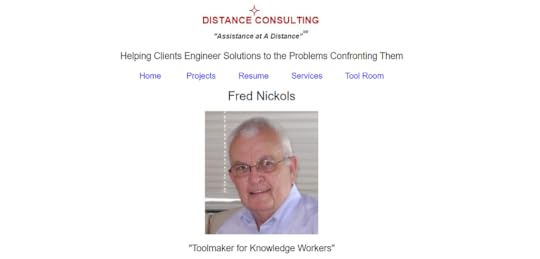
This is the 119th article in the Profiles in Knowledge series featuring thought leaders in knowledge management. Fred Nickols is a solution engineer, writer, consultant, and organizational generalist. He helps people in organizations figure out practical ways of coping with difficult workplace situations. Fred’s website is home to more than 200 free papers, articles, book chapters, and the award-winning Knowledge Workers’ Toolroom.
Background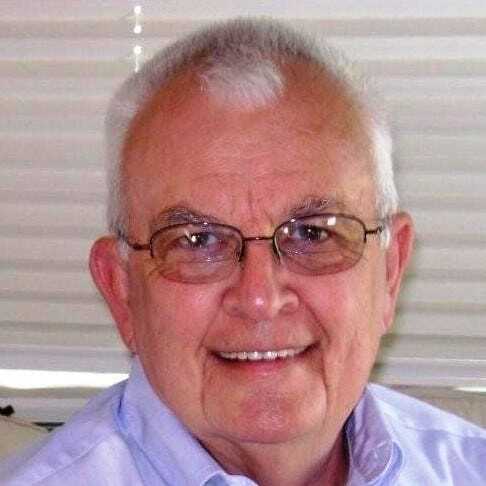 Silver Fox Profile
Silver Fox ProfileFred Nickols is a “Silver Fox,” an older consultant with many years of experience in a wide variety of areas. Currently, Fred is the Managing Partner of Distance Consulting LLC. His primary specialty is devising practical solutions to difficult and vexing problems of individual, team, process and organization performance.
Fred served 20 years in the United States Navy, retiring as a decorated Chief Petty Officer. As a Fire Control Technician, his work in the Navy focused on operating, maintaining and repairing complex shipboard weapons systems. He is a skilled troubleshooter and diagnostician, and he comes quickly to the heart of the matter at hand.
Upon retiring from the Navy, Fred took up a second career in the private sector, working first as a consultant at three small firms, then as Senior Vice President for Systems and Operations at Monarch Financial Services in New York City. Fred finished his career in the private sector with a 12-year stint as an Executive Director at Educational Testing Service, in Princeton, NJ, where he ran the Custom Operations Division, served as Chief of Staff for Operations, and headed up the Strategic Planning and Management Services unit. Upon retiring from ETS, Fred returned to consulting.
The functional and topical areas in which Fred has worked include sales, marketing, information systems, operations, process design and documentation, management skills and practices, claims adjudication, communities of practice, knowledge work, strategic and operational planning, strategic and operational decision-making, measurement systems, organizational restructuring, and change management. The industries in which he has worked include education, finance, healthcare, insurance, pharmaceuticals and telecommunications.
EducationUnited States International University — Studied psychology and statistics, 1970–1971ExperienceDistance Consulting LLC — Managing Partner, 2002 — PresentEducational Testing Service — Executive Director, 1990–2001Monarch Financial Services — Senior VP, 1987–1989Organization Performance Systems — President, 1978 -1986Systems Corporation of America — President, 1976 -1977Athena Corporation — VP and Director of Consulting Services, 1975 -1976Manpower Development Services — Consultant, 1974 -1975United States Navy — Chief Fire Control Technician, 1955 -1974ProfilesAboutResuméLinkedInTwitterFacebookContentLinkedInPostsArticlesResearchGateAcademia.eduGoogle ScholarDistance ConsultingComplete Site IndexThe Knowledge Worker’s Tool Room: Conceptual and Visual Tools for Knowledge WorkersArticlesSiteBook Reviews (16)Communities of Practice: A Collection of Resources (9)Consulting (13)Control Theory View of Human Performance (27)General Interest (15)Knowledge Work & Knowledge Management (12)Knowledge Workers’ Tool Room (83)Knowledge Worker Column (105)Musings, Short Stories & Sea Stories (16)Organization Development & Change Management (24)Solution Engineering (27)Strategy, Strategic Planning & Strategic Decision-Making (17)Training & Human Performance (55)Training Journal Column (8)Work, Workers, Working & Management (60)Working Smarter Column (22)Fred Nickols on Simplified Strategic Planning — AEA365Strategy: Definitions and MeaningsChange Management 101: A PrimerDon’t Redesign Your Company’s Performance Appraisal System. Scrap It!The Knowledge in Knowledge ManagementChoosing the Right Problem-Solving Approach24 Problem-Solving ToolsFive Kinds of Gaps and What to Do about Them Three Major Domains of Performance
Three Major Domains of Performance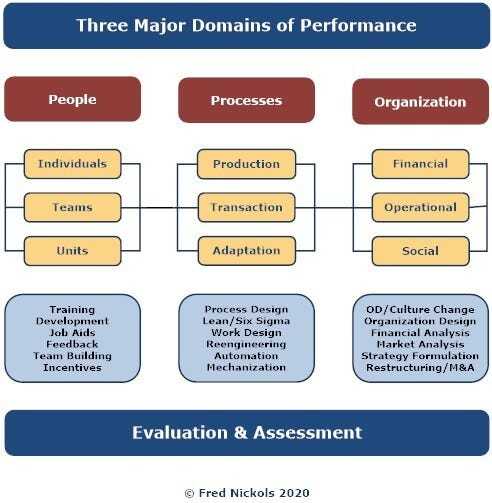 Thirteen Factors Affecting Job/Task Performance
Thirteen Factors Affecting Job/Task Performance
13 Cs of Performance
Clarity: The performer is clear about the task to be performed and the outcome or result it is to produce.Competence: The performer is competent to carry out the task; he or she has the necessary knowledge, skills, and degree of proficiency.Confidence: The performer is confident he or she can carry out the task and produce the desired outcome.Contribution: The task and its outcome contribute to some larger outcome or result, and the performer is clear about that contribution.Commitment: The performer is committed to carrying out the task; the task is seen as worthwhile.Consequences: The consequences for the performer of carrying out the task are, on balance, positive, not negative. Incentives are appropriate.Control: The performer is able to exercise adequate control over the task. Goals, standards, measures, measurement and feedback are all in place and available to the performer.Category: The performer’s approach to the task is consistent with its category. Tasks in the prefigured category require adherence to established procedure. Tasks in the configured category require that the performer figure out what to do.Circumstances: Environmental circumstances such as tools, resources, working conditions, etc., are supportive of task accomplishment.Cooperation: Any necessary cooperation on the part of others is forthcoming.Coordination: Any task dependencies and interdependencies are coordinated.Competition: There are no competing tasks or priorities that interfere with or preclude accomplishing the task in question.Communication: Information about the task, its outcome, relevant conditions, unforeseen circumstances, barriers and so on are promptly and freely communicated vertically and laterally (up, down and sideways) — to and from the performer.Articles by OthersThe Nine Elements of Performance — from Fred Nickols — HPT Treasures — for Evidence Based Performance ImprovementTrendSpotters: The Knowledge Worker’s Tool RoomAs Quoted by MeTypes of GroupsCommunities of Practice Resources
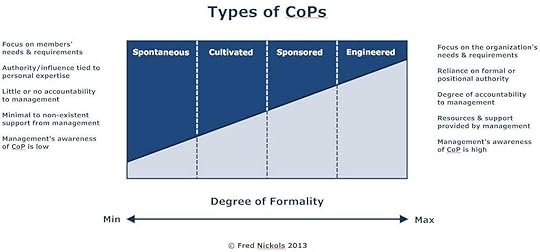 Peter DruckerPeter Drucker’s Chronicle of the Shift to Knowledge WorkKnowledge Worker: Drucker’s DictumsThe Knowledge in Knowledge ManagementExplicit, Implicit, Tacit, Declarative, Procedural, and Strategic Knowledge
Peter DruckerPeter Drucker’s Chronicle of the Shift to Knowledge WorkKnowledge Worker: Drucker’s DictumsThe Knowledge in Knowledge ManagementExplicit, Implicit, Tacit, Declarative, Procedural, and Strategic Knowledge Annotations from Communities of Practice: Selected ReadingsCommunities of Practice: The Organizational Frontier — PDF version — from the Harvard Business Review (Jan-Feb 2000) — Wenger lays out the basics of CoPs in his first HBR article, asserting that they might well reinvent organizations — if managers can learn to nourish and support themCommunities of Practice: The Social Fabric of a Learning Organization from Health Forum Journal (1996) — Wenger focuses on learning and discusses where and how it happens in organizations — mainly in Communities of PracticeCommunities of Practice: Learning as A Social System from the Systems Thinker (June 1998) — Wenger, the reigning authority on communities of practice, describes in detail the nature, life cycle and functioning of a community of practice.Thought Leader of the Week
Annotations from Communities of Practice: Selected ReadingsCommunities of Practice: The Organizational Frontier — PDF version — from the Harvard Business Review (Jan-Feb 2000) — Wenger lays out the basics of CoPs in his first HBR article, asserting that they might well reinvent organizations — if managers can learn to nourish and support themCommunities of Practice: The Social Fabric of a Learning Organization from Health Forum Journal (1996) — Wenger focuses on learning and discusses where and how it happens in organizations — mainly in Communities of PracticeCommunities of Practice: Learning as A Social System from the Systems Thinker (June 1998) — Wenger, the reigning authority on communities of practice, describes in detail the nature, life cycle and functioning of a community of practice.Thought Leader of the WeekIt seems to me that KM, like lots of other things (e.g., reengineering, change management, and communities of practice to name three) has been hijacked by the information technology (IT) folks. Abraham Maslow is often credited with saying that “If your only tool is a hammer then every problem looks like a nail.” To paraphrase him, when your only tool is a computer, then every problem reduces to the bits and bytes of data. For me, people should be front and center in any true KM effort and, as far as I can tell, they are not. As a consequence, neither is the most important form of knowledge: the kind that resides in human beings.
I typically don’t quibble about definitions of knowledge but, when asked, I generally point to some different forms it can take. There is, of course, the explicit form found in books and manuals and even in help screens on your computer. This is the kind of knowledge that can be articulated. Then, too, there is the tacit kind about which Polanyi wrote — the kind that can’t be articulated and thus can’t be documented. And there is a third form: the implicit, which is knowledge that resides in people and can be articulated but hasn’t yet been articulated. This is the kind of knowledge that can be teased out by a skilled observer/analyst. Explicit, tacit and implicit — these are the three forms of knowledge that I find useful to contemplate. Computer-centric KM efforts can cope only with the first kind, leaving the other two to go begging hat in hand.
It further seems to me that the really important meaning of knowledge — that is, a state of being in a human being that provides that individual with the capability for effective action — has gotten lost in the shuffle. As a consequence, we have huge databases and huge piles of documented practices, etc., etc., but we are no closer to being able to manage knowledge (i.e., concentrate and channel the capability for action along productive lines) than when the KM movement began. Many others will no doubt argue otherwise, but they have a huge investment to protect, and I don’t.
So, we have these huge investments in KM and, as far as I can tell, not a great deal in the way of demonstrable returns to show for them. And, at the same time, managing human capability for effective action — what for me should be the true focal point for KM — goes largely unattended and unaddressed. Moreover, were it to receive attention, those doing so would quickly encounter a requirement to shed much of what is believed about managing people in the workplace. Why? Because people — especially knowledge workers — aren’t programmable machines, or even compliant servants; they are autonomous, living control systems and they must be viewed and dealt with as agents acting on their employer’s behalf. As Peter Drucker said of knowledge workers a long time ago, they can’t be managed; they must manage themselves.
The net of all this is that I have largely lost interest in most of what now passes for KM. I’m still interested in communities of practice — the kind that center on people and practices — and I’m still intensely interested in knowledge as the capability for effective action, but I don’t pay much attention to the rest of what bears the label KM.
CommunitySIKM Leaders Community PostsPresentationsCommunities of PracticePersonal ProfileGuerrilla HPTA Potpourri of Tools for Knowledge WorkersHuman Performance Technology: The Dawn of a New EraChange Management in Hard TimesChange management in hard times
The Sustainable OrganizationPodcastWhat Are Visual Thinking Tools: CFO BookshelfBooksSea Stories: Tales about Leadership, Morale and MoreExcerpt: The High Cost of an Unthinking Request Tools for Knowledge Workers
Tools for Knowledge Workers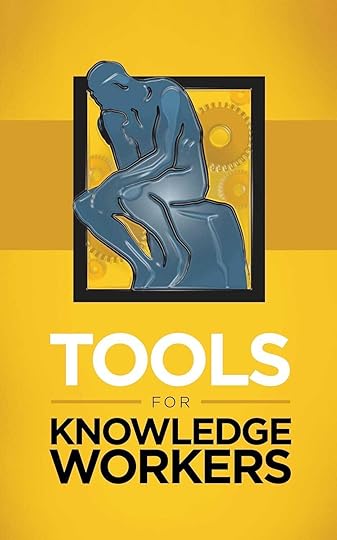 The Knowledge Management Yearbook 2000–2001 edited by John A. Woods and James CortadaChapter 1 “What is” In the World of Work and Working: Some Implications of the Shift to Knowledge WorkChapter 2: The Knowledge in Knowledge Management
The Knowledge Management Yearbook 2000–2001 edited by John A. Woods and James CortadaChapter 1 “What is” In the World of Work and Working: Some Implications of the Shift to Knowledge WorkChapter 2: The Knowledge in Knowledge Management [image error]
[image error]



